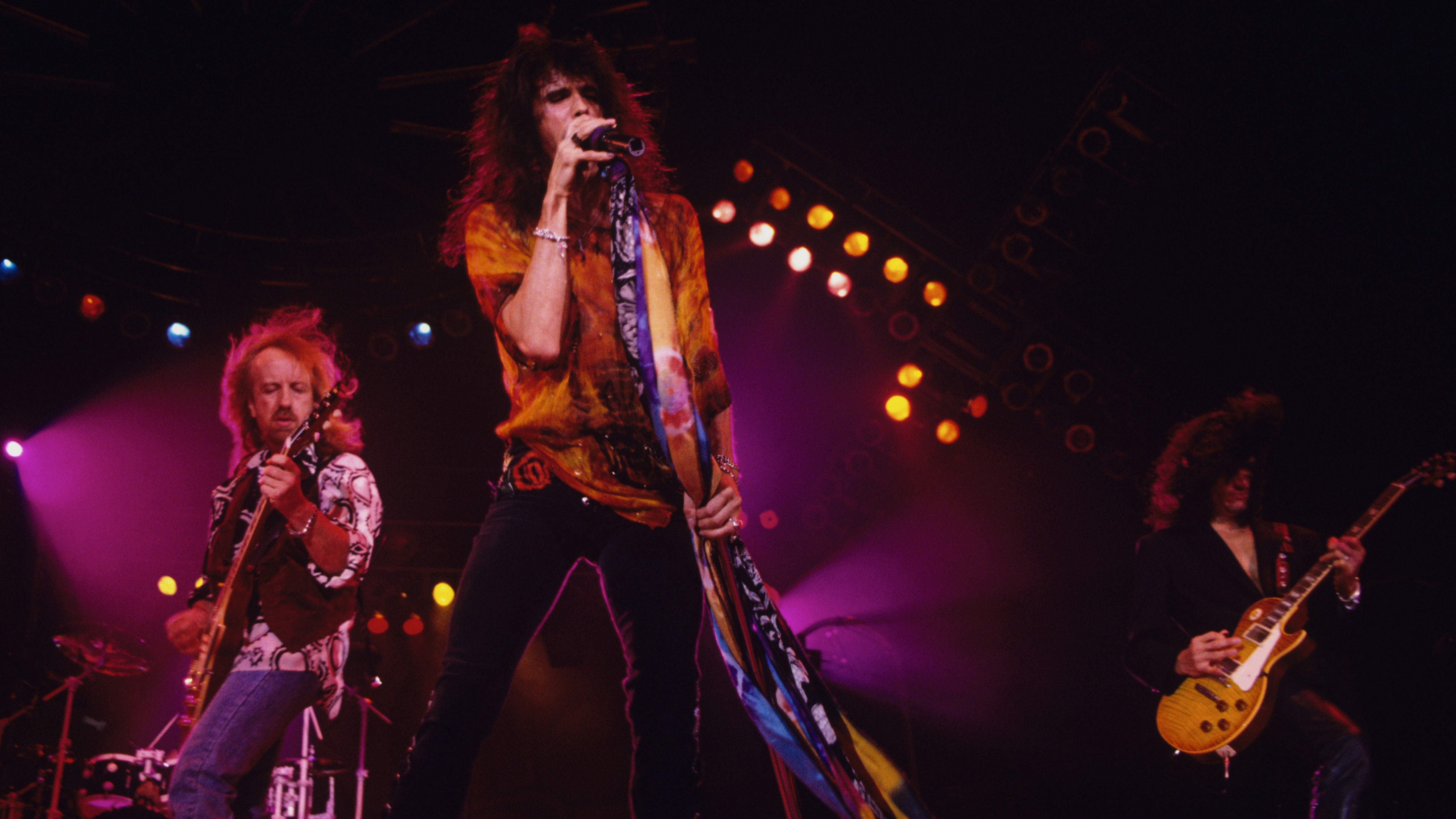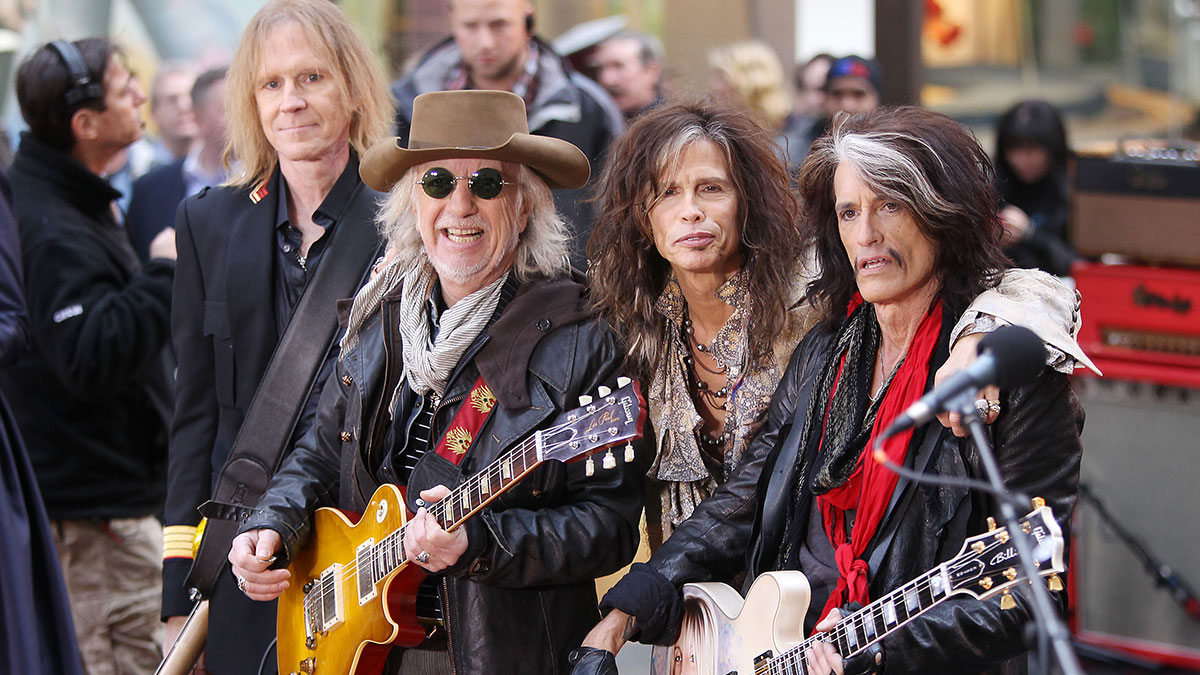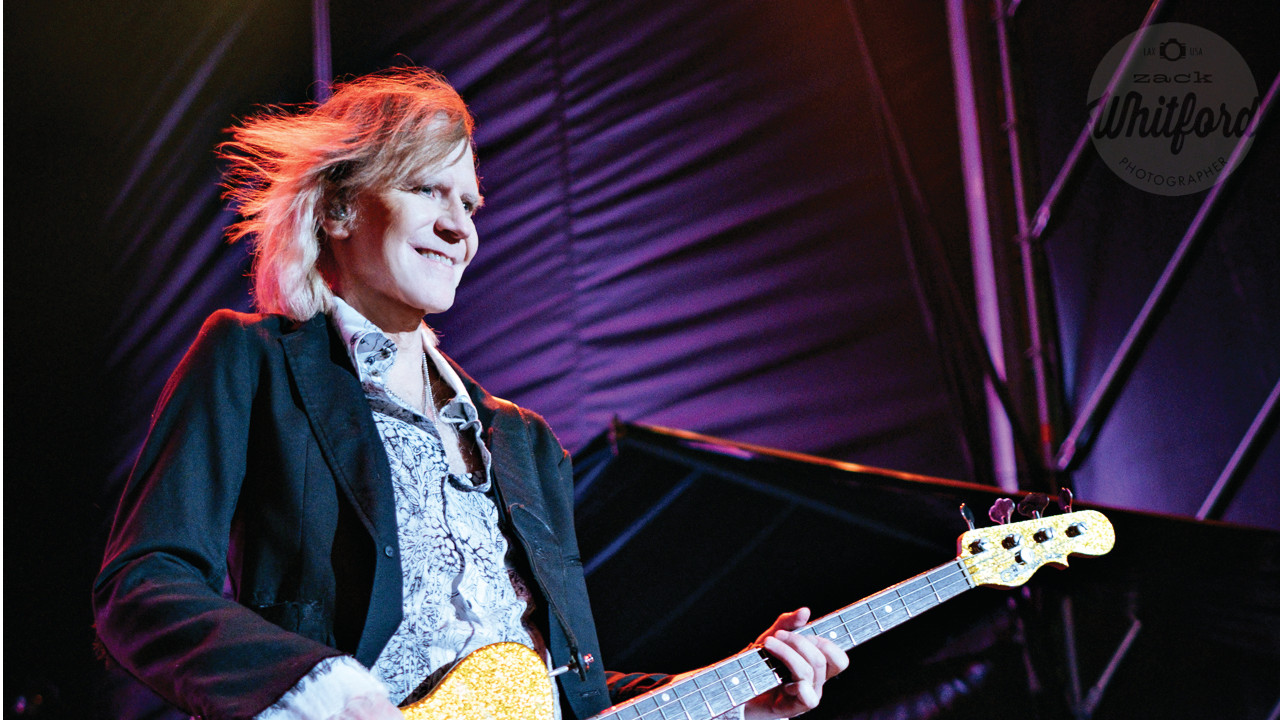"Their signature sound comes from a unique concoction of heavy metal, rock, blues and funk elements – all brought together by the alchemical musical alliance of guitarists Joe Perry and Brad Whitford": 5 Aerosmith songs you need to hear
As one of rock's greatest bands retires from touring, we look at where to start with their musical legacy

“We have made a heartbreaking and difficult, but necessary, decision – as a band of brothers – to retire from the touring stage.”
The news of Steven Tyler's vocal injuries forcing the decision for Aerosmith to retire from touring after five decades is the end of a mighty era. They are one of America’s biggest hard-rock exports, having outsold the likes of Van Halen, Guns N’ Roses, Bon Jovi and Metallica. Their signature sound comes from a unique concoction of heavy metal, rock, blues and funk elements - all brought together by the alchemical musical alliance of guitarists Joe Perry and Brad Whitford.
Whitford and Perry came from very different backgrounds when it came to playing the guitar. Whitford was a Berklee College of Music graduate and Perry was a self-taught player, who’d grown up armed with little more than a homemade ukulele that his uncle used to play and a love of The Rolling Stones, Jimi Hendrix and The Yardbirds.
The band rose to prominence in the mid 1970s, but hit something of a rut in the early 1980s, partly because of a decline in creativity, and partly - to borrow frontman Steven Tyler’s confessional phraseology - because they’d “snorted half of Peru”. Perry and Whitford both also temporarily quit the band and all you need to do is listen to 1982’s Rock In A Hard Place to be reminded of how key their guitar partnership is to the overall Aerosmith sound.
But the band bounced back, and now, with 15 studio albums and over 50 years of material to their name, we take a look back at some of Aerosmith’s greatest moments in guitar.*
*Spoiler alert. We’ve taken the small liberty of assuming that if you’ve arrived at this list, you’re probably already familiar with the monster hit, ‘Walk This Way’ - in either it’s original or hip-hop form - so you won’t find it listed below. But rest assured, we know it’s great, we know you know it’s great, so for now, let's enjoy some slightly deeper cuts from the mighty, mighty Aerosmith…
1. Toys in the Attic - Toys in the Attic (1975)
1975’s Toys In The Attic was undoubtedly Aerosmith’s break-out album, and it contains two of their biggest early hits, Sweet Emotion and, of course, the career defining Walk This Way. The track from which it borrows its title, however, is a must-hear for any guitarist venturing into Aerosmith’s extensive catalogue.
Want all the hottest music and gear news, reviews, deals, features and more, direct to your inbox? Sign up here.
Toys In The Attic rocks faster and harder than just about anything else Aerosmith have ever written, and its relentless E minor pentatonic riff and driving backbeat lends the track a punk rock energy that was no doubt designed to whip audiences into a pogoing, headbanging frenzy.

Punky and heavy as the track might be, Perry still finds space to display his melodic capabilities with a lead line that follows and compliments Tyler’s verse vocals brilliantly. His frenetic solo is rhythmic and playful, with an improvisational feel that’s reminiscent of one of his earliest heroes, Jimmy Page.
By 1975, Joe Perry had begun experimenting with a lot of different guitars, had become a Strat fanatic and acquired his first 1959 Gibson Les Paul. Toys In The Attic, however, was written on a 1955 Les Paul Junior that he’d recently acquired from Johnny Thunders of The New York Dolls.
The story goes that, while sitting in a converted barn in Ashland, Massachusetts - where much of the writing for the album took place - Perry was instructed by record producer Jack Douglas to come up with a “kick-ass up-tempo rocker” for the new album. Douglas tapped out a rhythm on his thigh, and with the Les Paul Junior in his hands, Perry jammed along, producing the riff and chords that would eventually become Toys In The Attic.
In his autobiography Rocks: My Life In And Out Of Aerosmith, Perry recalls: “When it came time to record it, the band threw in their own stuff and eventually Steven came up with lyrics. The experience reconfirmed that self-editing and unbridled spontaneity were the keys to my writing.”
2. Last Child - Rocks (1976)
The second track on 1976’s Rocks, Last Child is considered one of Brad Whitford’s most notable compositional contributions to the Aerosmith canon.
In the band’s biography, which - surprise surprise - is titled Walk This Way, he recalls: “After rehearsal one day, I played this riff and Steven yells, ‘I love it!’ and started playing drums; he plays very different from Joey with a more jazzy approach, fun to work with. Joe threw in a couple of chord changes, a D chord to an A, and then spiced up the chord a little. That’s where Last Child came from."

The arpeggiated chords of the first 20 seconds lead the listener to believe they’re about to embark on a power ballad in the same vein as Dream On or Seasons Of Wither, but such expectations are obliterated when the track’s funky dual-guitar riff comes slinking into action. What ensues is three minutes of pure groove, and a masterclass in making two guitars (or, rather two guitarists) work in total cooperation with one another.

Brad Whitford: "We still have our original members, and we've seen our ups and downs"
Far less flamboyant in than Perry, but nonetheless integral to the band’s characteristic sound, Whitford is should never be underestimated or thought of as Aerosmith’s 'other' guitarist.
In fact, he and Perry seem to share an almost telepathic musical connection, and it’s the effortless-sounding, highly syncopated interplay between the two guitars that makes Last Child a truly stand-out track. Somehow simultaneously tight and loose, the two guitar parts weave in and out of each other with Whitford taking charge of the 'main' part of the riff low down on the neck, while Perry slots in well-placed funk chords higher up the neck.
Whitford also takes a rare moment in the spotlight to deliver a blistering Les Paul solo, while Perry keeps the groove going underneath. The solo reaches its climax with a wailing two part harmony. On the studio version, this may well have been a straight Whitford overdub, but live, it gives the two players the opportunity to display once again just how in sync they are with each other.
3. Train Kept A Rollin - Get Your Wings (1974)
On their 1974 album Get Your Wings, Aerosmith brought Tiny Bradshaw’s classic Train Kept A Rollin’ thundering into the hard-rock canon, just over a decade after The Yardbirds had put their own Brit blues twist on it.
Both Tyler and Perry had performed Train Kept A Rollin in their pre-Aerosmith outfits, so it provided a good bit of common ground when they started to practice and perform together. In Rocks: My Life In And Out Of Aerosmith, Joe Perry sums up how playing the track together helped seal the deal for their working relationship:
“Before the jam, I was a little concerned that Steven might be a little too pop for me. But when we got together on Train Kept A Rollin’, Yardbirds style, I knew that Steven was no stranger to the blues – or at least the English version of the American Blues.”
The song became a staple of Aerosmith's gigs and the band’s original plan was to record a live version, but producer Jack Douglas persuaded them otherwise. The studio version consists of two distinct halves: a slower, groove-led version of the track, followed by the heavy-rocking Yardbirds arrangement. To give the second part more of a “live feel”, Douglas overdubbed crowd noise from George Harrison’s 1971 Concert For Bangladesh recording.

Joe Perry didn’t play the solos on Train Kept A Rollin, and neither did Brad Whitford
The song became well-known for its bendy opening train horn emulations and its absolutely blistering solos. However, for anyone with a keen set of ears and a predilection for sonic sleuthing, you might smell - or hear - something a little fishy.
The lead tone is more trebly and biting than Perry’s, and the fingers feel as if they’re sprinting about the fretboard with far more urgency than his more relaxed style. This is because Joe Perry didn’t play the solos on Train Kept A Rollin, and neither did Brad Whitford.
Douglas actually employed top session guitarists Steve Hunter and Dick Wagner to play lead on the song. Legend has it that he spotted Hunter outside of the studio, on a break from another session, and invited him into Aerosmith's room.
In a 2015 Detroit Rock N Roll Magazine interview, Hunter revealed: "I had a long wait between dubs, and I was waiting in the lobby. Jack popped his head out of Studio C and asked 'Hey, do you feel like playing?' I said, 'Sure,' and I grabbed my guitar and went in. I had two run-throughs, and then Jack said, 'Great - that's it!' That turned out to be the opening solo on Train Kept A Rollin.”
He used a 1959 Les Paul Special, got paid $750 for the job, and was unaware that his session buddy Dick Wagner had also been brought in to solo over the song's imitation live section.
Neither Hunter or Wagner received credit at the time, and Hunter was never asked to teach Perry or Whitford what he played, but it seems that they’ve long since gotten the hang of it, and of course, added their own twists, licks and improvisations. Live, the pair will often divvy up the lead duties on this one - and let’s face it, there's plenty to go around!
4. Love In An Elevator – Pump (1989)
In true Steven Tyler style, most of the lyrical content of Love In An Elevator comes from south of the belt buckle
Love In An Elevator was the lead single for Aerosmith’s 1989 album, Pump. It was the second of their albums to be produced by Bruce Fairbairn, who had also worked on Permanent Vacation, and who had helped Aerosmith to resurrect their sound with a more 'contemporary' feel.
In true Steven Tyler style, most of the lyrical content of Love In An Elevator comes from south of the belt buckle, but the song is saved from a fate of total tongue-in-cheek gimmickry by some absolutely stellar guitar playing from Perry and Whitford.

By this point, the band had moved on a little from their blues rock roots towards a style far more in keeping with the ubiquitous hair metal of other bands of the time like Mötley Crüe and Bon Jovi, and Love In An Elevator sees them at their bombastic best. It’s unadulterated ‘80s excess from start to finish, and the irony is: this is one of the tracks the band produced after getting sober.
The opening riff is perhaps second only to Walk This Way in terms of how instantly recognisable it is. Played in E, it’s doubled-up on two guitars, the bass follows suit and Steven Tyler hums along as well – just to really get the point across.
In terms of its arrangement, Love In An Elevator is quite chaotic with a lot of layering and intertwining rhythm and lead parts, as well as the use of chorus and reverse delay. In his autobiography, Joe Perry sums up the sound he was looking for:
“During the recording at Little Mountain Sound in Vancouver, I was after the maximum sonic boom. With Fairbairn’s help, we achieved it. To borrow a phrase from Frank Zappa, it sounded like dinosaurs eating cars.”
5. Livin’ On The Edge’ – Get a Grip (1993)
No list of great Aerosmith songs would be complete without at least one power ballad, and Livin’ On The Edge is one of Aerosmith’s most interesting. It was released as the first single from 1993’s Get A Grip and earned the band a Grammy in the same year.
Lyrically, the track deviates from the typical power ballad theme of romance, and was, in fact, inspired by the Los Angeles Riots of 1992. Livin On The Edge’ is Aerosmith at their most serious - not that you would guess it from the music video, which features Joe Perry soloing in front of an oncoming freight train, grand theft auto, rollerblading school girls smashing up cars, and a naked Steven Tyler clutching his genitals. But don’t let that put you off…!

From a guitar perspective, the song features plenty of epic ballad ingredients as it evolves from a sparse, pensive intro with jangly acoustic guitar and a droning lead part into a raucous, richly layered masterpiece - complete with whopping power chords and a howling guitar solo.
Said solo, which is performed by Perry, is the star of the track and it’s one of a handful of occasions where he shows-off his talents for slide, as he nimbly swaps from fretted notes to the slide to reach some of the highest notes. Even without the visual of the oncoming train, the melodic solo builds tension and serves to stitch together two dynamically diverse parts of the song as it emphasises the shifting chords underneath, and provides a segue into the heavier, riffier middle section of the song.
Cleverly, the track closes with a guitar line that mimics the ominous drone of a police or ambulance siren as the rest of the instrumentation fades to nothingness - a reminder of the events that inspired the composition.
Ellie started dabbling with guitars around the age of seven, then started writing about them roughly two decades later. She has a particular fascination with alternate tunings, is forever hunting for the perfect slide for the smaller-handed guitarist, and derives a sadistic pleasure from bothering her drummer mates with a preference for “f**king wonky” time signatures.
As well as freelancing for MusicRadar, Total Guitar and GuitarWorld.com, she’s an events marketing pro and one of the Directors of a community-owned venue in Bath, UK.










